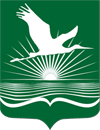Please use this identifier to cite or link to this item:
https://rep.polessu.by/handle/123456789/23858| Title: | Peculiarities of physical rehabilitation of patients with a severe COVID-19 |
| Authors: | Kokhan, S. Vlasava, S. Romanova, E. Kolokoltsev, M. Balashkevich, N. Izbasarova, I. Syzdykbayev, M. |
| Keywords: | COVID-19 degree of lung lesion recovery physical rehabilitation |
| Issue Date: | 2021 |
| Citation: | Peculiarities of physical rehabilitation of patients with a severe COVID-19 / S. Kokhan [et al.] // Journal of Physical Education and Sport. - 2021. - Vol. 21, Suppl. issue 6. - pp. 3155-3161. |
| Abstract: | At present, physical rehabilitation of coronavirus patients is considered to be one of the most important tasks in the practice of maintaining and increasing the functional state and physical working capacity of the population. Meanwhile, the features of patients' recovery depending on the severity of the previous COVID-pneumonia have not been fully studied. The objective of the study. Improving individual approaches to physical rehabilitation of persons who have had COVID-19 with severe lung lesion (CT-3, CT-4). Material and methods. Two groups of male patients (n=34) who underwent outpatient rehabilitation after COVID-19 virus infection were examined at the Chita polyclinic (Russia). Nineteen patients in the first group (KT-3) were diagnosed with moderate severe lung lesion (50-75 per cent) and 15 patients in the second group (CT-4) with severe lung lesion (>75 per cent). There was a study of somatometric and functional indicators of patients, measuring an individual’s effort and exertion, breathlessness and fatigue during physical work by The Borg Rating of Perceived Exertion (Borg RPE) scale and the 6-min walk distance test (6 MWD). Based on the monitoring results, a physical rehabilitation plan in the post-COVID period was drawn up. Results. After three months of physical rehabilitation, statistically significant differences in oxygen saturation (SpO2)recovery rates compared to the initials values were found in the groups studied (p<0.05). After the completion of the rehabilitation course in both groups, the values of the Borg Rating of Perceived Exertion and the 6-min walk distance test, hand-held dynamometry significantly increased, the level of blood oxygen saturation increased. SpO2 in the first group (CT-3) on average reached 97.7 ± 0.7% and were significantly higher than SpO2in the second CT-4 group (96.4 ± 0.7%). The breath-hold time increased in Stange and Genchi’s tests results. Conclusions. The results of our outpatient research confirmed the effectiveness of using a three-month physical rehabilitation program for patients with severe lung lesion (CT-3-4) after COVID-19. Non-informative parameters (pulsometry in dynamics, Stange and Genchi’s tests results) have been identified to assess the effectiveness of physical rehabilitation of a given contingent of patients. |
| DOI: | 10.7752/jpes.2021.s6420 |
| Appears in Collections: | Публикации сотрудников / Publications of the teaching stuff of Polessky State University |
Files in This Item:
| File | Description | Size | Format | |
|---|---|---|---|---|
| Peculiarities.pdf | 177.12 kB | Adobe PDF | View/Open |
Items in DSpace are protected by copyright, with all rights reserved, unless otherwise indicated.
